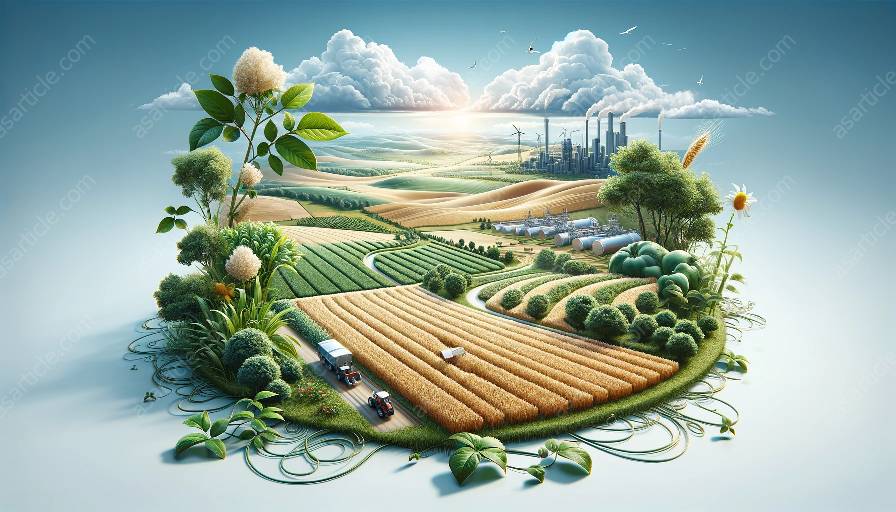Flower production technology encompasses various techniques and practices that contribute to the cultivation of diverse floral species. This cluster explores the intersection of floriculture, landscape architecture, and agricultural sciences, offering insights into optimizing flower production and enhancing the visual aesthetics of landscapes.
Floriculture: Cultivating a Floral Paradise
Floriculture, the branch of horticulture that focuses on the cultivation of flowering and ornamental plants, forms the backbone of the flower production technology. It involves the meticulous care and management of flowers to produce visually appealing blooms.
Key Components of Floriculture:
- Selection of Suitable Flower Species: Floriculture encompasses the identification and selection of flower species tailored to specific climatic conditions, soil types, and market demands.
- Propagation Techniques: Various propagation methods such as seed germination, cuttings, grafting, and tissue culture play a pivotal role in expanding the floral repertoire.
- Greenhouse Management: The utilization of greenhouses enables controlled environmental conditions, fostering optimal growth and bloom development.
- Nutrient and Water Management: Proper nutrition and irrigation strategies are crucial for the healthy growth and development of flowers, minimizing the risk of diseases and disorders.
Landscape Architecture: Blending Nature's Beauty
Landscape architecture integrates the principles of design, horticulture, and environmental sustainability to create aesthetically pleasing and functional outdoor spaces. It aligns with flower production technology by incorporating diverse floral elements into landscape designs, promoting harmony between natural and built environments.
Integration of Flowers in Landscape Architecture:
- Plant Selection and Arrangement: Landscape architects carefully select and arrange flowering plants to create captivating compositions that harmonize with the surrounding environment.
- Seasonal Considerations: Utilizing a variety of flowering plants that bloom at different times ensures year-round visual interest and vitality within landscapes.
- Ecological Balance: Incorporating native and pollinator-friendly flowers fosters ecological balance and sustains local biodiversity, contributing to a healthier environment.
- Maintenance Practices: Effective maintenance techniques such as pruning, fertilization, and pest management uphold the visual appeal and health of floral elements within landscapes.
Agricultural Sciences: Bridging Innovation and Cultivation
The realm of agricultural sciences encompasses a spectrum of disciplines that intersect with flower production, ranging from genetics and biotechnology to sustainable farming practices. It leverages scientific advancements to optimize flower production and address agricultural challenges.
Advancements in Flower Production:
- Genetic Enhancement: Research and selective breeding programs focus on developing flower varieties with desirable traits such as enhanced color vibrancy, extended vase life, and disease resistance.
- Sustainable Practices: Agricultural sciences promote the adoption of eco-friendly cultivation methods, including organic fertilization, integrated pest management, and water-efficient irrigation systems.
- Technological Innovations: The integration of precision agriculture technologies, automated irrigation systems, and sensor-based monitoring enhances the efficiency and precision of flower production.
- Market Trends and Consumer Preferences: Understanding market trends and consumer preferences guides the strategic cultivation of flowers tailored to meet evolving demands and design trends.
Optimizing Flower Production: Synthesizing Knowledge and Innovation
The convergence of floriculture, landscape architecture, and agricultural sciences empowers practitioners to optimize flower production. By amalgamating traditional wisdom with contemporary advancements, a synergetic approach emerges, enriching the visual and ecological allure of floral landscapes.
The Benefits of Enhanced Flower Production Technology:
- Diversification of Floral Offerings: Advances in technology expand the array of floral species available for cultivation, translating into diverse and captivating floral displays.
- Elevated Aesthetic Appeal: Improved cultivation techniques and design integration elevate the visual appeal of landscapes, fostering enchanting floral experiences.
- Environmental Sustainability: The amalgamation of sustainable practices and ecological considerations safeguards natural resources and promotes biodiversity conservation.
- Economic Viability: Strategic utilization of flower production technology aligns with market demands, offering economic viability for cultivators, landscaping professionals, and associated industries.
Embracing flower production technology entails a holistic and multidisciplinary approach, harmonizing the art and science of cultivating and integrating floral marvels into the fabric of landscapes. As technology continues to evolve, the possibilities for creating mesmerizing floral tapestries and sustainable living environments burgeon, inspiring the perpetual evolution of floral landscapes.

